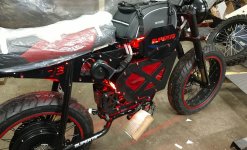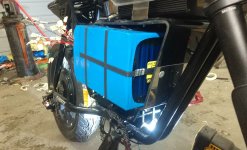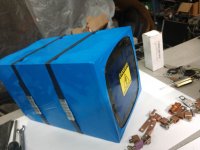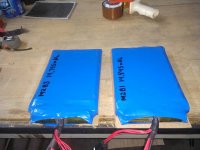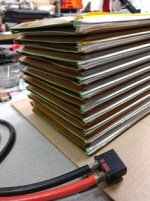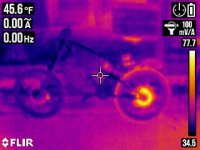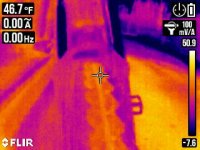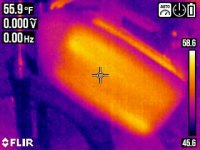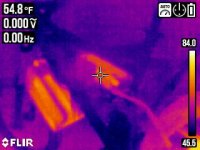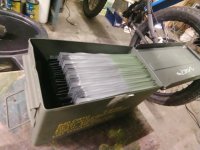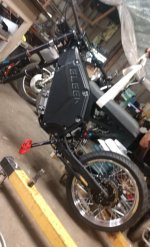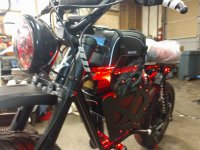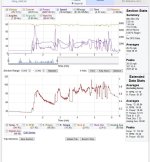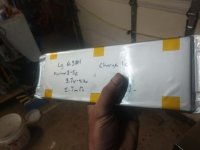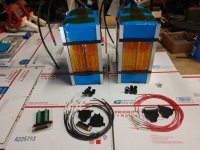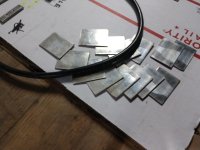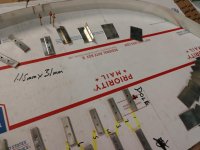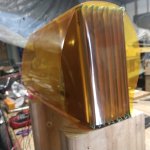I think I would always use a BMS for charging and usually active balancing (at least lately)
If the cells are well-matched, balancing isn't going to be used until the pack ages enough to become unmatched (or a cell (group) fails for some reason).
Monitoring (BT via app, etc) is always useful in troubleshooting or just plain keeping an eye on things over time.
... but wondering if I can get away with using a smaller, relatively cheaper one (EG: ~40a JK BMS) vs. a big high discharge (EG: 200a-300a ANT BMS) w/ quality pouches (not random, purchased from the same production run, at least, but also perhaps not perfectly matched) or if that comes with any risk, imbalance problems, etc (BMS bypassed for discharge). I have used a BMS for discharging with cylindrical cells for safety (mostly paranoid about thermal runaway->fire), but wondering if that might be a waste in this case.
Depends. If there is a failed cell or other problem, a fire is possible with any battery (even lead-acid). Some chemistries and especially some manufacturing processes (or really, lack of QC processes, and/or using the parts that failed those processes anyway), are more vulnerable to this than others.
A BMS, even if it controls charge and discharge, cant' stop a thermal event that's happening, but it can prevent a pack from discharging below any cell's LVC point (as setup in the BMS's programming or hardware), or charging above any cell's HVC point (as set in BMS). Since those are two of the things that could lead to damage that could lead to a fire, a BMS can minimize the possibility of a fire.
So...what to use for a BMS (or to use one at all) depends on your cells, usage, and end-results desired. If the cells aren't well-matched, then a balancing BMS is a good idea to keep the pack "usable" for more of it's capacity (otherwise the growing difference in SoC between cell (groups) will increasingly decrease

the available capacity of the pack since some groups will be charged less than others).
If you're not using the BMS to control discharge, only charge, then any BMS that supports sufficient charge current and has the other functions you want will do, regardless of it's discharge current capability. If it could support the necessary charge current, even a "5Amp"-discharge BMS would work, if anybody makes one.
You could even get a contactor-based BMS, without the contactor, and add your own as needed for whatever current it has to support, for charge or discharge.
I had seen some test with newer LG cells that didn't do much other than get the wire really hot during a full short test, but don't know how unique that is among modern pouch cells (I think that is what planted the original idea as I used to have a relatively negative impression of pouch es compared to circles).
Good quality cells that are not QC rejects

have a lower likelihood of causing a fire should something go wrong, but there are still ways to damage a cell that can lead to fires later on, though because a fire destroys the source cause evidence, much of what definitely causes fires is unknown. Some things are known to cause fires based on experimental lab information, some is (at least partly) speculation based on chemical and physical changes that happen under some conditions that could or do cause instability that can lead to reactions that cause fires.
So even if a brand new cell, charged up to normal and then shorted out, doesn't burn, that same cell if it is then used for a while normally afterward could develop problems that have undesirable results, because of the excessive current thru (and probably heating of) the cell itself, beyond it's design limits, that may cause chemistry changes or physical alterations in the cell.
Or a cell of the same model that is overdischarged below it's safe limit, then recharged, the changes to the cell that happen during the overdischarge could lead to problems (including fire).
Etc.
Cells today (new, good quality, not QC rejects

) are better designed with each new version, model, etc., but nothing is ever perfect, and there is always variation in the manufacturing process and the stuff used to make them from (which is why there still has to be QC and sorting).
Liveforphysics could speak to all this much better than I can, as he does battery testing (to destruction!) for a living.

He's posted some results of some things, but mostly I think his results are for the companies contracted with and probably private, so I don't think there's threads about specific cells, batteries, etc. about his results.
 !
!

